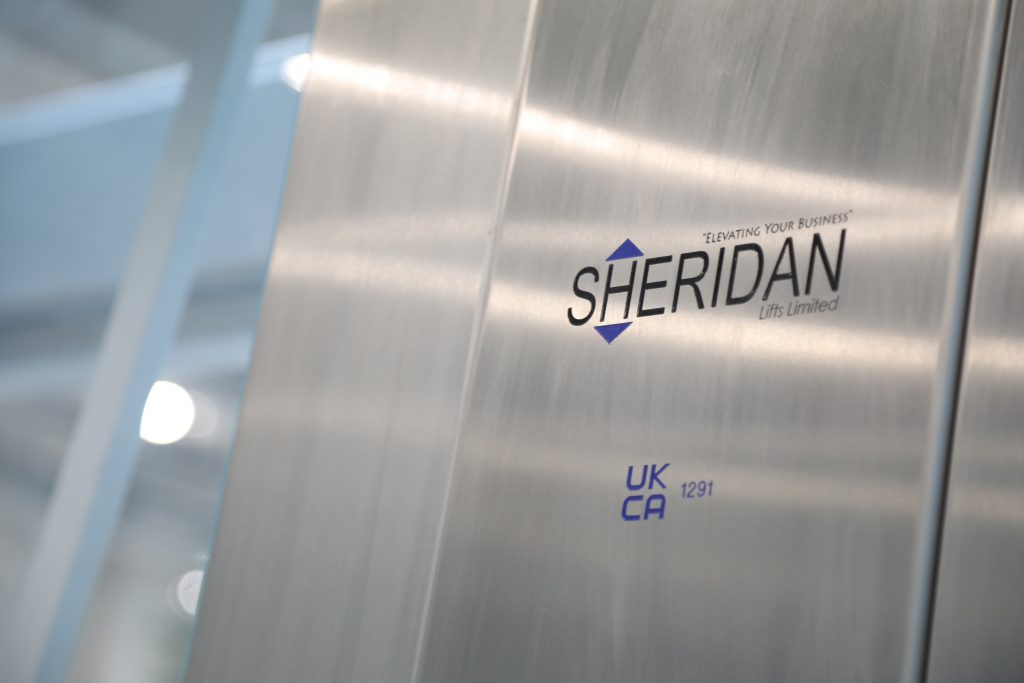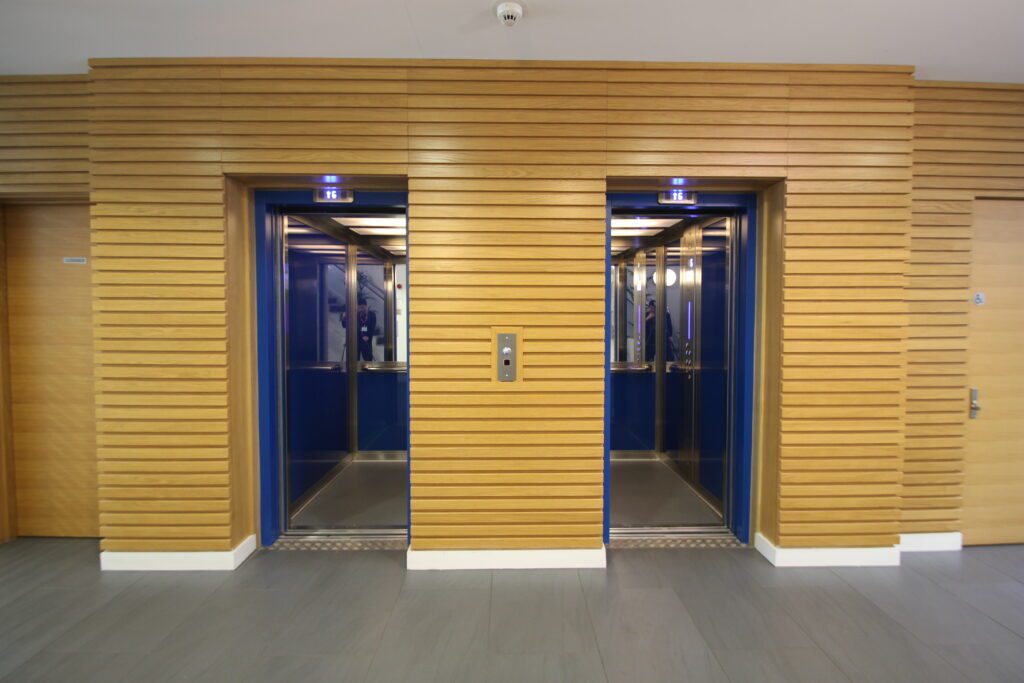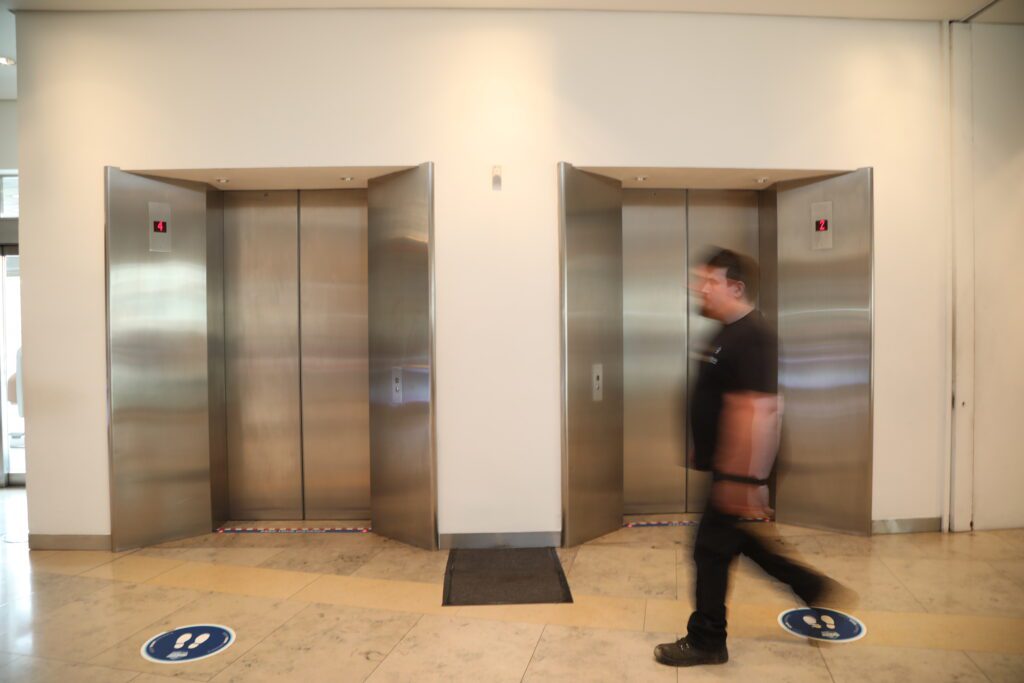Choosing a new lift for your building can be a daunting process, particularly if you’ve never had to do so before. You probably have many questions regarding how the lift will be installed, how much it will cost, and why you would benefit from it in the first place. You may also have concerns regarding safety, or be struggling to work out where to install one.
Whatever your questions or queries regarding lift installation, Sheridan Lifts are here to help.
Why Might you Need a New Lift?
There are numerous reasons why you could benefit from choosing a new lift. Here are just some of them:
- Your business is based in a building with many different floors and it takes your staff a lot of time and effort to get to their offices. By getting a new lift, or even several, you can ensure your staff can move between floors and departments quickly and efficiently.
- You are concerned about disabled access for your staff and your clients. This is a growing concern for many building owners, and with 31% of disabled people finding it hard to gain access to places on a regular basis, it’s easy to see why.
- Your building contains a lot of elderly people or people with prams, both of whom will struggle with stairs when faced with them on a daily basis.
- Your business involves moving heavy or inconvenient goods between different floors.
- Your building already has a lift, but it is old or malfunctioning. You wish to replace it.
- You are worried about workplace injuries caused by people using the stairs or carrying things up and down them.
- There is already a lift in the building but you need to add another, in order to service more staff.

Considerations to Have when Choosing a Lift
There are many different things to consider when choosing a lift. Many of these will depend on the nature of your business, the type and age of the building, how many people you employ, and your budget. Also, there will undoubtedly be practicalities involved. For example, your building may be in an attractive area and a scenic lift might offer you and your employees a beautiful view, but if the lift is going to mostly ferry heavy goods and materials up and down to different floors each day, then it is unlikely to be appropriate. Even if the lift was sturdy enough for the job, few people would have the time to take notice of the view when they are in this situation.
Below is a list of the main things you need to consider when installing a lift.
Which Drive System do you Need?
The drive system of a lift is literally what powers it and makes it move up and down a level. In the UK, there are three main options when it comes to drive systems. All of these work differently and are best suited to specific uses.
Hydraulic drive systems
With a hydraulic drive system, the platform is attached to a hydraulic ram. To move the lift up, hydraulic fluid is drawn from a reservoir and is pushed into the ram using an electrically powered pump. To bring the lift back down again, the hydraulic fluid is drained back out of the ram.
Hydraulic drive systems have some key advantages:
- Cost-effective.
- Overhead structures are not required; most of the load-bearing is performed by the walls.
- Can carry high loads.
Hydraulic drive systems are very popular but they do have some drawbacks. For a start, although a hydraulic lift doesn’t need a machine room, there does need to be a lot of room for a pump and reservoir beneath the lift. If there isn’t, then this can make this type of drive system inappropriate for you.
A hydraulic drive system also needs its cables replaced quite regularly, and in hot weather, the hydraulic fluid may smell unpleasant. Such a system can be quite noisy too, meaning that if it’s going to be situated near workers or in a quiet environment, it may prove a distraction.
Hydraulic lifts can be found in a wide range of environments and may be used in shipping, construction, mining, retail, and for transporting people and goods from one floor to another.
Screw and nut drive system
With a screw and nut drive system, the cabin of the lift is attached to a drive nut that travels up and down a screw. This motion is powered by an electric motor. Essentially, as the motor turns in one direction, it causes the lift to rise – and, as it turns back the other way, it lowers.
The advantages of a screw and nut drive are as follows:
- Safe and reliable.
- Very durable. In fact, this kind of system can last up to thirty years if it is maintained correctly.
- A simple system to understand and therefore repair.
- The drive fits comfortably within the lift shaft, meaning it is compact and unobtrusive.
- May be able to be installed without a lift pit.
- Low maintenance when compared to other types of drives.
This kind of system does have a few downsides. Firstly, it often requires a supporting wall to install it safely, particularly if it’s travelling up several floors. This could restrict where you can put the lift.
Also, the thread on the screw and drive nut can wear down or be susceptible to damage. This means it may need regular lubrication via a self-lubricating system.
If your building is only a few levels and you’re only transporting people or light loads, then this can be an ideal option.
Encapsulated chain drive systems
This drive system uses a chain encased in a special plastic casing, rather than cable, meaning it is less likely to stretch. This chain is usually counterweighted.
The chain is attached to a driveshaft and this is turned by a motor and gearbox situated at the top of the shaft. As this turns, it raises or lowers the lift accordingly towards the next level.
Benefits of this system include:
- Durability. As such, a longer warranty is normally available.
- The plastic casing on the chain prevents slipping.
- Chains can potentially last up to 20 years.
- Ideal for larger buildings with more floors
What is your Budget?
One of the key things to consider when choosing a lift is the size of your budget. A screw and nut drive system will be cheaper than the other drive systems, but may not be ideal if you want to travel up many floors or carry heavy loads.
You may want a scenic lift in order to add to your passengers’ experience and to improve the aesthetics of your building. However, these will come at a higher price than a standard lift. So if budget is an issue, you may need to think carefully about this.
If you are considering a bespoke lift then again, this will be more expensive as it has to be made-to-measure. Larger lifts will cost more too because of the additional resources required and the extra labour to install them.
We at Sheridan Lifts have a wide range of lift options and we are happy to consider your budgeting requirements.
How Many Floors do you Need to Cover?
How big is your building? If it has two or three floors and is only transporting a few passengers then a screw and nut driving system should be fine. However, if you’re looking at a building with over 6 floors then this kind of system might prove too slow. Instead, you could look at a traction lift such as an encapsulated chain system. This won’t lose speed halfway up the building. A hydraulic lift can also travel up many levels with ease.
Don’t forget to consider the size of the gaps between floors. If there’s a large gap between floors then the lift may well achieve its maximum speed. However, if there are a lot of floors and the lift has to keep stopping, it’s unlikely to ever reach its full potential. As such, opting for the fastest lift may not always be necessary.
We at Sheridan can talk you through the best options for your building, ensuring that you get the right lift for your site.
How Many Passengers do you Need to Carry?
A lift serves a purpose. It needs to get passengers or goods from A to B within your building. It needs to be able to do this reliably and promptly – otherwise, people will have to take the stairs anyway. As such, when choosing a lift, there are lots of different things to consider.
Lifts come in numerous sizes and with many different features, and there’s a good reason for that.
Think carefully about how many people use your building on a regular basis, and what kind of things they normally carry around with them. For example, if it is an apartment block that houses 200 people then the chances are that, when guests are figured in as well, you may need to work to an overall usage of 250 potential users a day. How many of these are likely to need a lift at the same time? What about at key times, like rush hour or school runs? If they miss the lift, how long roughly will to return to them from the furthest point away (Normally the ground floor or top floor)? What if someone has bought a new bed and wants to take it to the top floor – can they do this easily enough?
Likewise, if you are running a theatre and want a lift to take backstage equipment from the loading bay up to the stage, you need to consider how many people are likely to need to use that lift at the same time, as well as how much scenery and audio-visual equipment might need to be moved using it. The size of your venue, the average size of your show, and how many people you employ on each shift will all affect this. If you are only a small venue prone to stand-up shows and small plays that are light on scenery, your requirements will not be the same as a large venue that may need to move heavy loads full of lighting and sound or wide loads stacked with scenery.
We at Sheridan Lifts can help work this out with you, ensuring you get the correct lift to meet your needs.

How Does the Lift Installation Process Work?
Lift installation is a skilled business and it is essential that you hire a professional lift installation company to complete your work. We at Sheridan Lifts have a proven track record, having been in business since 1979. As much as a new lift is a major job to undertake, rest assured we will do you proud. We minimise disruption and offer a truly professional service.
To try and put your mind at rest about undertaking such a large-scale project, here is a short guide as to what you can expect throughout the process.
Discussing and Planning your Lift
All good things need to be well-planned. By contacting a reputable lift installer, you will get to talk to a trained lift designer who will talk you through your needs and will work out what is best for you. They will likely discuss the type of building it is, how it operates (for example, is it residential, a shop, or a factory), how many levels the lift will need to travel, how many people will use the lift, and what kind of people they are (age, ability, etc.). They will also ask if equipment or works materials will be placed in the lift, and what other functions it might serve. All of this is to discern what load-bearing capacity is required, how fast it needs to be and also how far it needs to travel.
It will also discern what kind of lift is being installed. A passenger lift is the most common and recognisable form of lift. However, there are also platform lifts that are ideal for wheelchair access—a legal requirement in some cases. Then there are car lifts that are designed for multi-storey residential parking, and eco-lifts that are designed for the more environmentally conscious people and companies.
There may also be discussions about aesthetics, depending on the kind of lift being installed. Some people want lifts to be less obtrusive and to blend in with the current surroundings, so there may be a discussion about the colour of the exterior door or cabin interior. Perhaps you are interested in a scenic lift that enables passengers to see out over their surroundings as they go up and down.
There may be bespoke options discussed, especially if a standard lift is not meeting your needs in some way. They may also discuss the options of having two or more lifts if one lift doesn’t seem likely to keep up with footfall.
A surveyor will then come out and analyse the building itself, making sure that it is safe and suitable to install a lift in the area you’re suggesting. The building needs to be strong enough to support the lift and there also needs to be enough room for it and all of its components. There needs to be enough room for the installation team to be able to work safely, and installation needs to be able to be completed without severely impacting the residents or workers already using the building.
In some instances, the surveyor may look for an alternative site if the one you have picked is considered unsuitable.
Once all these discussions are completed, you are ready to begin the actual lift installation process.
Set the Columns
An engineer and their team will arrive to set the columns that the lift will need.
Adding the Carriage
The engineers will mark out where the carriage needs to go and then the carriage will be placed inside the columns as indicated by these markings.
Drive System Installation
The drive system will most likely be installed at this point, although it does depend on the kind of drive system you have chosen.
Assembling the Gates
Gates and enclosures are welded into place at this point. These are key safety features as they stop people from slipping or injuring someone.
Electrical Aspects
The engineer and his team will make sure the lift is wired up and will move between levels. They will test all buttons and electrical functions are working. They will also test to lift to ensure it is operating easily and safely.
Inspection
The engineer will thoroughly inspect the whole lift to ensure it is safe and operational. You will then be given a demonstration of the lift, to ensure you know how to use it.

If you are looking to install a new lift for your building then Sheridan Lifts can help you. We offer professional services and a wide range of lifts for all kinds of purposes. We offer standard lifts and custom-made options, meaning there is always a way we can help. With over forty years of experience in the business and a wide range of accreditations, we let our work speak for itself. If you want to discuss your lift installation with us, please get in touch.